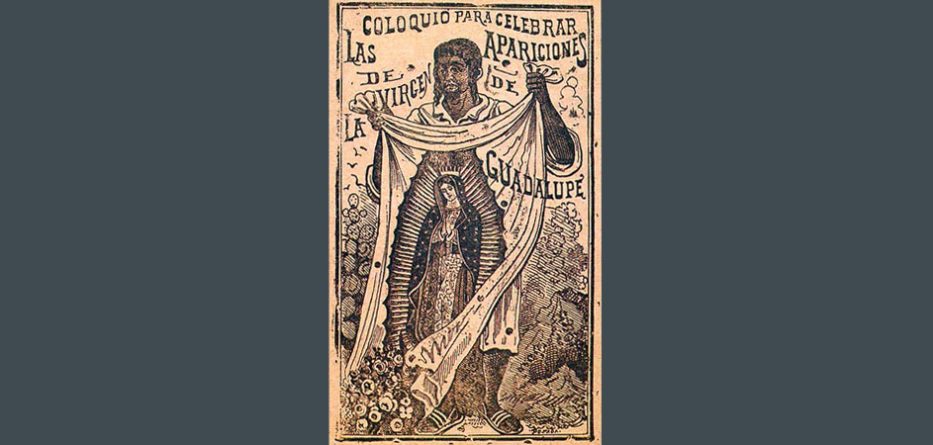December 9 is the Feast of Saint Juan Diego
The story of Saint Juan Diego is rich. But the man himself is hidden behind his meaning. He was said to be a native Aztec who lived both through the brutal conquest of Mexico by Cortes and his military force and the beginnings of exploitation by the Spanish land and mine proprietors.
Juan became a Christian, and twelve years after the Conquest Mary appeared to him outside the city. She spoke to him in his native language and asked him to erect a shrine to her on the hill under the title of Our Lady of Guadalupe.
After being rebuffed by the Spanish Bishop, she appeared again and told him to go back to the Bishop with his request. When Juan Diego was hesitant, she asked him, ’Am I not here, I am your mother?, and promised him a sign, duly delivered, of flowers that dried into an image of Mary as a native Mexican woman.
Devotion to Mary spread among the native people. A century later an account of his life in the native language was published, and after another century devotion to Juan Diego was recognised. Today millions of pilgrims come each year to the Cathedral in Mexico City each year to celebrate the feast of Our Lady of Guadeloupe.
The meaning of the story of Juan Diego and of the appearance of Mary is clear and its connotations radical. In his time the Spanish conquerors regarded the Mexican people as inferior and the Catholic Church was a Spanish implant led by Spanish clergy many of whom rejected the cultural practices of the native Mexicans.
European theologians could even debate whether the native people had souls, and so were fully human. If not, of course, they could be enslaved and denied respect.
In this world the appearance of Mary as a native woman speaking the native language and identifying herself with a Mexican village came as a shock. It also affirmed the dignity of the people and the gift that they brought to the Church.
It is understandable that the devotion to Our Lady of Guadeloupe was initially opposed by many Spanish clergy because of its links with earlier religious practices and beliefs of the Aztecs. That the devotion is now so popular, and that Juan Diego has been canonized, affirms the dignity of the Indigenous Mexican people and of their own culture.
Fr Andrew Hamilton SJ writes for Jesuit Communications and Jesuit Social Services.








